Is there a pair of fins and foot pockets suitable for freediving and spearfishing in any location world-wide? From the warm waters of Dominica, West Indies to the frigid waters of northern Vancouver Island, Canada. We want a pair of fins that can perform in both environments.
Well, we found the C4 Mustang HT carbon fiber fins, put them to the test, and wrote this review. Freedivers travel all around the world for diving in multiple locations with wide ranges of water temperatures. The ability to bring one pair of freediving fins anywhere is much coveted among freedivers, spearfishers and snorkelers.
The Foot Pockets
The Scarpetta footpocket was a game changer that was introduced over a decade ago by C4. “Scarpetta” is Italian for “little shoe”, and precisely like a shoe it provides comfort when diving.
The rubber footpockets fit snug and are comparable in shape to a soccer cleat or a cycling shoe. Indeed C4’s history in producing carbon fiber parts for bicycle racing might have provided inspiration for this design. The footpockets themselves have a 3° angle to better represent the natural curvature of the foot. The shoe is entirely enclosed except for a small hole in the front and the lacing holes.
The biggest advantage of the Scarpetta footpockets is the lacing system. They can be used with 5-6mm neoprene socks in 5°C – 10°C water temperatures. The thickness of the rubber and anatomical design also provides insulation. In warm water conditions, the rubber lacing system lets you reduce the interior space of the footpocket significantly, thus letting you wear them with no neoprene socks at all! The comfort to the foot never changes, and I’ve found that the transfer of power is the same when wearing neoprene socks (unlaced) or no socks (unlaced).
For comparison, I use the Scarpetta European size 39/40, I have a 270mm long and 105mm wide foot, and usually wear 41-42 European size.
The Carbon Blades
As a freediving instructor a carbon blade can make a large difference when doing multiple dives with students during a session. Prolonged deep bi-finning can produce serious strain on the calf muscles, the tendons, bursa, and arches of the feet. I’ve noticed that the 870mm long and 200mm wide the Mustang HT blades are the right length for long days on the line or deep spearfishing sessions.
The Mustang HT carbon blades use an impressive TR50Hypertech “big square” design that yields a good elastic return. This results in an overall very light blade, an advantage during those high-amplitude kicks for breaking through positive buoyancy. An impressive feature I’ve noticed is how the carbon fiber design makes you feel like you’re wearing a 700mm blade and not a 870mm blade!
The thickness tapers off towards the end of the blade, which provides support and rigidity beneath the foot, but allows for proper flexure at the end of the blade. All the torque is transferred throughout the blade as it flexes with each kick, and you’ll feel it. C4 provides three stiffness options: soft, medium and hard. Which to use depends on a diver’s weight, height and performance. As a general suggestion from having used these fins extensively, go for a blade which is less stiff than usual.
The blade itself is designed with an angle of 29°. With the 3° angle of the footpocket this yields an effective angle of 32°. The principal advantage of this is to counter the effect of the natural angle of the foot (when in a relaxed position). During a freefall, the blades will thus be 32° offset and quasi-parallel to the rest of the body, which results in a more streamlined position and greater hydrodynamic efficiency.
The final detail you’ll notice on the Mustang HT blades are the EVO water rails (C4 Patent). According to the manufacturer these are designed to channel the water over the blade and reduce turbulence when kicking. Although they do increase the stiffness of the blades (a point to consider when choosing the stiffness level), they provide important lateral stability.

Downsides
The footpockets are manufactured using a thicker rubber than most other footpockets out there, so they are a bit heavy. There are advantages to this as mentioned above, however a lighter footpocket could reduce muscle strain. It would be great to see a new generation of C4’s Scarpetta footpocket, I know I would purchase them immediately.
The EVO water rails provide stability and reduce turbulence on the blade surface. However, they are rather large and can occasionally get snagged on each other during kicking. The profile could probably be reduced somewhat without a reduction in performance. The fact the water rails taper off according to the blade thickness from foot to tip is an excellent feature, but a smaller rail would reduce stiffness and increase comfort.
The “Scarpetta” is only offered in European sizes 39/40, 41/42, 43/44. 45/46 and 47/48. They also usually run large, as most fins do. I would like to see a smaller size 37/38 produced, since some of my students with smaller feet have to wear neoprene socks even when laced up.
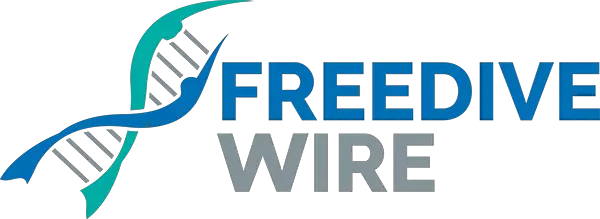
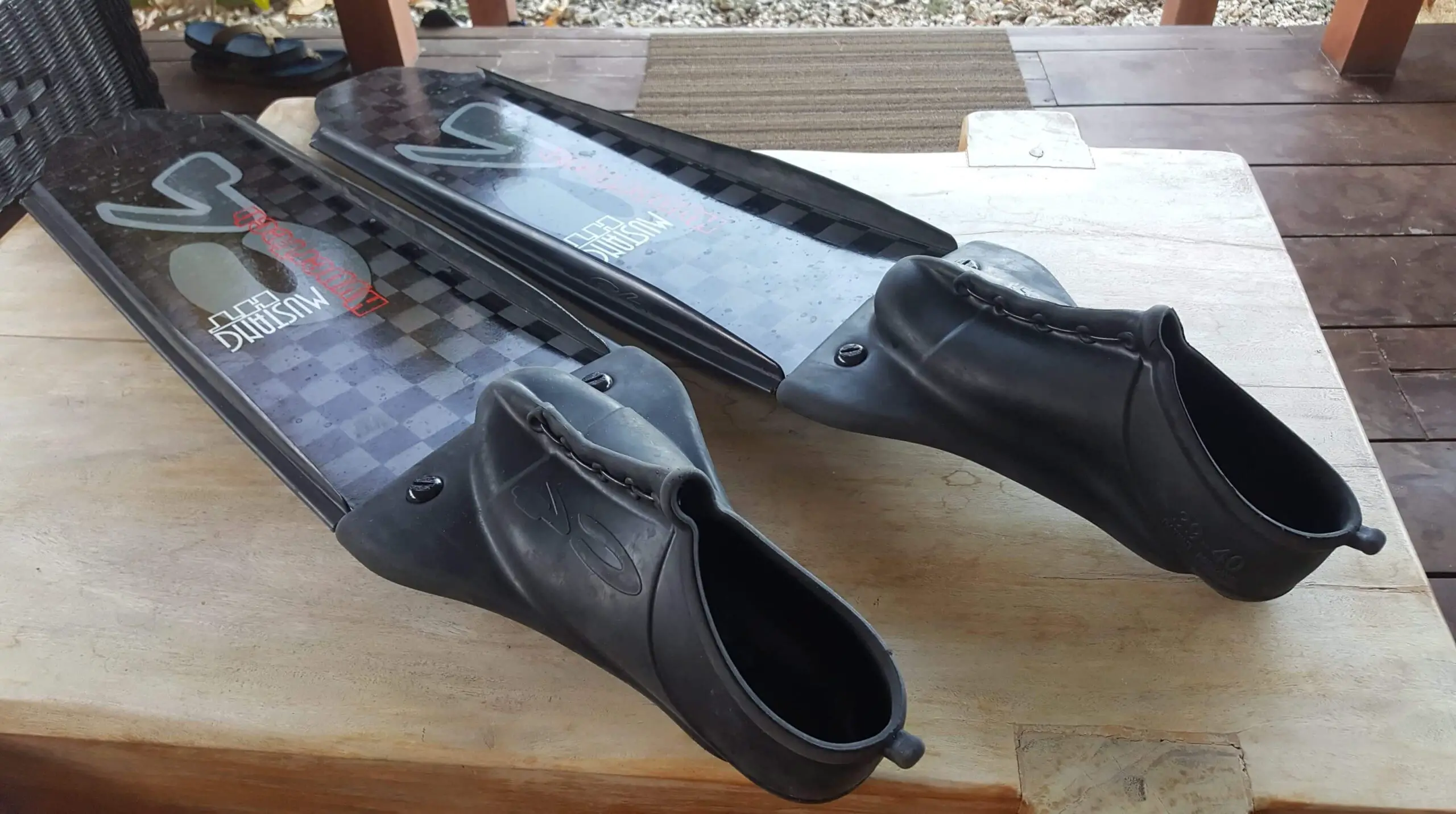
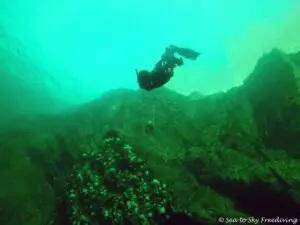
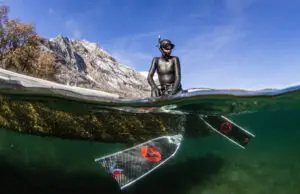
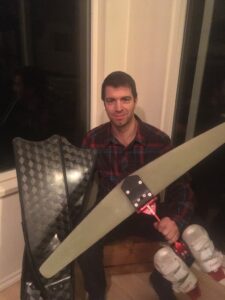
Good job!
I’ve used the Scarpetta pockets, and they are very comfortable, barefoot or with booties.
High rails certainly can make for better water flow and higher efficiency, but there is a trade off. One thing about the blades which most divers who don’t use a wide variety of fins will miss, high rails substantially reduce maneuverability. For line divers, its not an issue, but most spearos need the agility of lower rails. Less agility was particularly noticeable when switching between the older C4s with high rails all the way to the fin tips and Specialfin blades designed for spearfishing which had almost no rails at all. I’d be curious to try the new blades with their lower rails towards the tip.
Thanks Connor! Appreciate your thoughts and feedback.